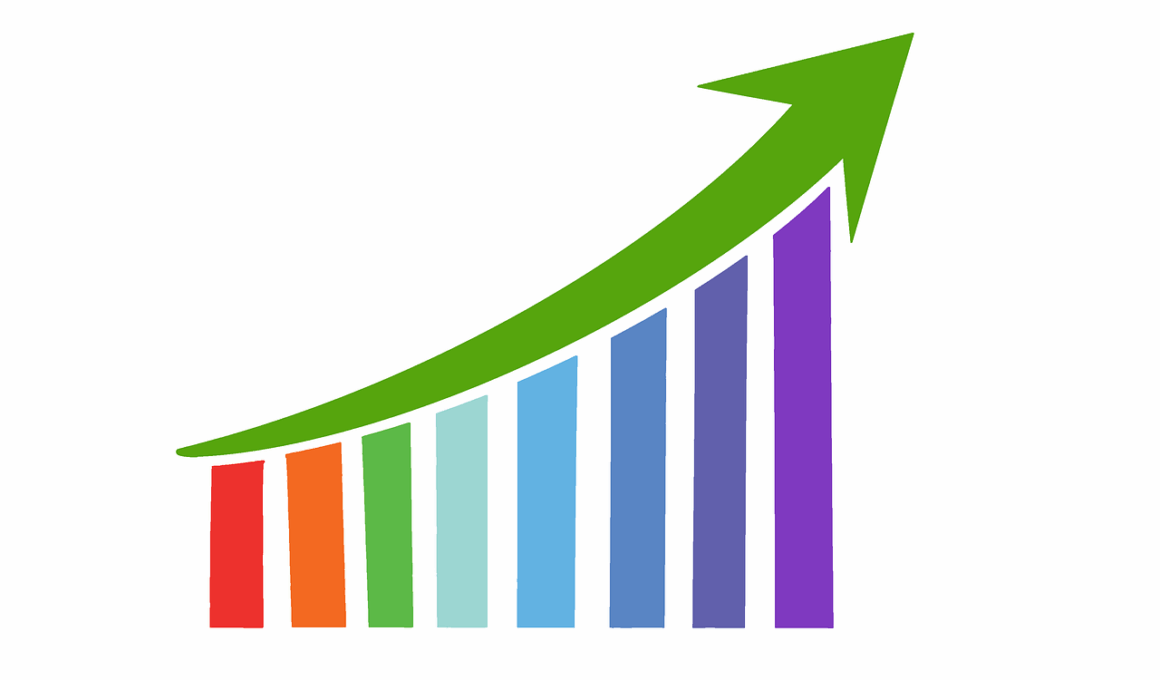Key Metrics to Track for PPC Success
Pay Per Click (PPC) advertising is a potent tool used by businesses to enhance their online visibility, drive traffic, and improve conversions. A crucial aspect of optimizing PPC campaigns involves analyzing key metrics. These metrics provide insights that inform adjustments, ensuring campaigns remain effective while maximizing returns. By understanding which metrics are essential, advertisers can make better data-driven decisions. One of the primary metrics to focus on is Click-Through Rate (CTR), which measures how often people who view an ad end up clicking it. A high CTR indicates that your ads are appealing and relevant to your target audience, while a low CTR suggests they may need refinement. Additionally, tracking the Quality Score, which is Google’s rating of the quality and relevance of your keywords and PPC ads, can profoundly impact both ad placements and costs. It acts as an integral component in measuring PPC success, influencing overall campaign performance significantly. Continued assessment of these metrics not only aids long-term strategy development but also fosters immediate adjustments to optimize individual campaigns effectively.
The next crucial metric to monitor is the Conversion Rate, which indicates the percentage of users who complete desired actions after clicking an ad. Understanding Conversion Rate gives advertisers insight into campaign effectiveness, as a low percentage might mean the landing page isn’t compelling enough. Furthermore, tracking Cost Per Acquisition (CPA) is equally important. CPA details how much you spend to acquire a customer, allowing marketers to analyze the financial effectiveness of their campaigns. By finding the right balance between ad spend and acquisitions, businesses can significantly enhance their overall profitability. Also, keep an eye on the Return on Ad Spend (ROAS), which evaluates how much revenue is generated for every dollar spent on advertising. A positive ROAS indicates successful ad campaigns, while a negative one may necessitate strategic changes. Regularly assessing these metrics enhances insights into user behavior and helps craft an approach that resonates better with the audience. Thus, the consistent evaluation and optimization of these metrics can lead to profound improvements in PPC campaign performance and long-term success, transforming ad investments into meaningful returns.
Utilizing Analytics to Fine-Tune Campaigns
Another significant metric that can’t be overlooked is Impressions, representing the total number of times an ad is displayed. While high impressions do not necessarily translate to clicks, they play a key role in brand visibility. A high impression count paired with a low CTR may indicate the ad copy or targeting needs modification. Additionally, understanding the Bounce Rate of your landing pages is essential. A high bounce rate indicates users aren’t engaging with the content, suggesting that the landing page might need a fresh look or better alignment with user intent. Utilizing analytical tools such as Google Analytics or PPC software enables advertisers to track these vital metrics efficiently. Understanding user journeys and identifying drop-off points enhances tactical planning, leading to improved campaign performance. Regular interactions with analytics data not only empower marketers with substantial insight but also guide strategy adjustment towards data-driven decisions. Early identification of weak points ensures that campaigns don’t waste expenses and optimally target the right audiences, paving a clear path toward achieving overall marketing goals and elevating the effectiveness of PPC efforts.
Another effective method to analyze PPC success is through A/B testing. This allows marketers to experiment with different ad variations to see which performs better in real-time. For instance, varying the language, colors, or call-to-action within ads might yield significantly different results. Tracking the performance of these tests provides insights beyond the surface level, revealing what resonates best with potential customers. Furthermore, integrating demographic data of the audience who engages with your ads helps tailor campaigns more precisely. Knowing the age, gender, and geographical location of your customers can lead to adjustments that boost engagement. This type of granular data allows marketers to create highly personalized ads, fostering deeper connections with viewers. Moreover, utilizing remarketing techniques to reconnect with users who previously interacted with your website can also boost conversion rates. This strategy focuses on user intent, ensuring that your ads are displayed to the right audience at the right time. Thus, embracing A/B testing along with demographic analysis results in improved optimization and fine-tuning of PPC campaigns while ensuring that ad dollars effectively contribute to overall marketing success.
Boosting Ads with Effective Keywords
Keywords play a pivotal role in the success of PPC ads. Selecting the right keywords is essential to ensure your ads appear in relevant search results, greatly influencing visibility and impressions. Utilizing keyword research tools can aid in identifying high-performing keywords while continuously monitoring their performance during the campaign lifespan remains vital. Regularly revisiting keyword selection based on performance data ensures alignment with changing market trends and user search behavior. In tandem, managing negative keywords prevents ads from displaying for irrelevant searches, improving overall ad performance by saving budget and enhancing CTR. Handy tools like Google’s Keyword Planner can provide valuable insights into keyword performance while predicting potential traffic and bid costs. Additionally, incorporating long-tail keywords into campaigns can usher in lower competition and attract higher conversion rates due to more specific searches targeted. Their lower search volumes notwithstanding, these keywords often yield more qualified traffic, reinforcing the importance of strategic keyword research and management in PPC campaigns. Therefore, a balanced approach towards keyword utilization fosters a more impactful ad campaign overall, enhancing PPC effectiveness and intermediate results.
Lastly, monitoring the Competitor Ads provides valuable insights into what strategies are working within the industry. By keeping an eye on your competitors, you can adapt their successful strategies while identifying gaps in their execution that can be turned to your advantage. Tools like SEMrush or SpyFu enable detailed analysis of competitor PPC campaigns, offering information on keywords they target, their ad budgets, and the types of ad copy they’re using. Benchmarking performance against competitors allows businesses to enhance their PPC strategies, staying competitive in a crowded market. Moreover, understanding seasonality impacts within the industry can optimize campaigns through timely adjustments, ensuring relevancy and audience engagement. Tracking industry trends helps marketers anticipate shifts in consumer behavior, allowing for proactive adjustments in campaigns before competitors react. Consequently, having a solid grasp of competitor strategies ensures that your own PPC ads not only remain competitive but also utilize a broad array of tactics aimed at maximizing visibility and driving conversions. Altogether, a comprehensive understanding of both the competitive landscape and market trends propels PPC campaigns towards heightened performance and overall success.
Wrapping Up PPC Success Strategies
In conclusion, the significant metrics discussed contribute immensely to the overall success of PPC campaigns. By focusing on Click-Through Rates, Conversion Rates, Cost Per Acquisition, and Return on Ad Spend, marketers gain critical insights that enable informed decision-making. Additionally, the importance of analyzing Impressions, Bounce Rates, A/B testing, and keyword management offers pivotal information for campaign refinements, leading toward enhanced performance. Integrating analytics into daily operations not only highlights areas for improvement but also allows marketers to stay agile in adapting strategies as necessary. Moreover, keeping an eye on competitors and industry trends contributes valuable knowledge that can further boost ad performance. As businesses seek to refine their PPC strategies and maximize budget utilization, a deep understanding of these metrics proves indispensable. Building a data-driven culture around PPC ensures greater visibility, improved targeting, and ultimately higher conversions. Investing time and effort into meticulous analysis and strategic adaptation rewards businesses significantly, translating advertising spending into tangible results and growth. Therefore, leveraging these strategies positions businesses toward long-term PPC success through informed choices and measurable outcomes.
Ultimately, the journey toward optimizing PPC campaigns is ongoing, requiring consistent evaluation and a willingness to adapt. As market dynamics and consumer behaviors evolve, staying ahead necessitates continuous learning and strategic shifts in approach. The enhanced understanding garnered through metrics, analysis, and competitor insights provides a foundation upon which effective campaigns are constructed. Marketers who embrace this detailed analysis translate their findings into actionable strategies that support business growth. Furthermore, leveraging technology and analytical tools to steer decision-making helps maintain a competitive edge in crowded markets. Thereby, the focus remains not solely on achieving immediate results but on fostering sustainable success in the long run. Implementing these strategies ultimately empowers businesses to navigate the complexities of PPC advertising successfully. Marketers must remain vigilant and responsive in adjusting tactics, ensuring that campaigns evolve alongside changing environments, customer needs, and competition. Investing in skilled personnel with proficiency in analytics enhances a company’s ability to achieve PPC excellence. In doing so, organizations position themselves not only to succeed currently but to thrive in the future, streamlining advertising efforts towards optimal customer engagement and satisfaction.


